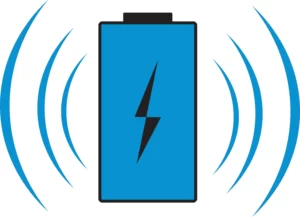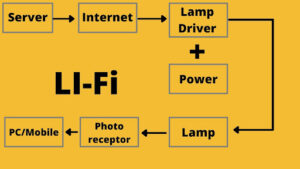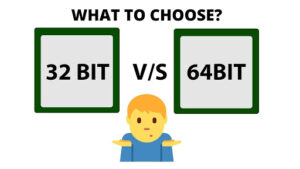Progressive Scan vs. Interlaced Scan
First, I want to inform you that the meaning of ‘P’ after any display resolution (like 1080p or 720p or
1440p, or 2160p) is not ‘Pixel’,. The meaning of ‘P’ is ‘Progressive’. And there is also another like that, which is called ‘i’(1080i) i.e. ‘Interlaced’
A computer screen and a television screen do not display videos in the same way. A computer screen displays the image only once for each frame of video. In a simultaneous process, both the fields that make a video frame are displayed In this way, a computer screen displays video at 60 fps or 60 frames per second. This is called a progressive scan display. Think of the following animation as a monitor display and see how it works.
Progressive Scan Display
On other hand, a television screen updates
each field of a video frame separately. For this reason, the television has to update its
display twice to show a complete frame. The first time, it updates the odd fields, and after 1/60th of a second, it updates the even fields. It continues alternating between the odd and lines 60 times in a second. A television displays content at 60 frames per second. This is called an interlaced display.
Think of the following animation as a T.V. display and see how it works.
Interlaced Scan Display
T.V. signals are typically compatible with interlaced displays, and computer signals are typically compatible with progressive (non-interlaced) displays. These two differences are not compatible with each other they definitely need to be converted to the other computer signal shown on a T.V. or vice versa. But about 80% of the L.E.D or
L.C.D. T.V. that is coming with a
progressive scanning display in the market. Because the progressive scanning
display creates much more clarity than the interlaced scanning display. But here
is a drawback, you have to reduce the resolution for the quality.
L.C.D. T.V. that is coming with a
progressive scanning display in the market. Because the progressive scanning
display creates much more clarity than the interlaced scanning display. But here
is a drawback, you have to reduce the resolution for the quality.
But when
we process the interlaced signal to a progressive signal there occurs an
annoying situation that is called ‘Combing’. Combing is created when
each individual frame transfers from interlaced to progressive which is done by
your Digital SetTop box or the T.V. itself. This combing only happens when you
watch T.V. with a Progressive screen or on a computer monitor via a T.V. tuner.
we process the interlaced signal to a progressive signal there occurs an
annoying situation that is called ‘Combing’. Combing is created when
each individual frame transfers from interlaced to progressive which is done by
your Digital SetTop box or the T.V. itself. This combing only happens when you
watch T.V. with a Progressive screen or on a computer monitor via a T.V. tuner.
Now the question is why we use these two scanning
processes. Let’s discuss it below.
processes. Let’s discuss it below.
Progressive:-
The main advantage of progressive scans is that
i)
The motion appears smoother and more realistic.
The motion appears smoother and more realistic.
ii)
There are no interlace artefacts in
the frames and can be captured for use as still photos.
There are no interlace artefacts in
the frames and can be captured for use as still photos.
iii) The Progressiv scan system does not need an intentional blurring of video to reduce eye strain.
Iv) In the case of most media, such as DVD
movies and video games, there is always used a
movies and video games, there is always used a
progressive scanning process.
V)
It also offers clearer and
faster results for scaling higher resolutions than its
It also offers clearer and
faster results for scaling higher resolutions than its
equivalent interlaced video, such as upconverting 480p video to display
on a 1080p
display.
Interlaced:-
Benefits of Interlaced scanning
i)
The most important factors in analogue
television are signal bandwidth, which is measured in megahertz (Mhz). The
greater the bandwidth, the more expensive and complex it will be. This
includes cameras, storage devices, broadcast and reception systems i.e. the terrestrial,
cable, satellite, Internet, and end-user displays (TVs and computer monitors).
The most important factors in analogue
television are signal bandwidth, which is measured in megahertz (Mhz). The
greater the bandwidth, the more expensive and complex it will be. This
includes cameras, storage devices, broadcast and reception systems i.e. the terrestrial,
cable, satellite, Internet, and end-user displays (TVs and computer monitors).
ii) Interlaced image scanning process uses a higher refresh rate. This higher refresh rate updates the position of the objects in motion frequently, this process improves the appearance of an object. Movies or films or T.V. shows are normally recorded at 24fps, and therefore don’t benefit from interlacing.
iii)
The interlaced video can also provide a higher resolution than a progressive scan if we give a fixed bandwidth and high refresh rate. For example, 1920×1080 pixel resolution interlaced
HDTV with a 60 Hz refresh rate (i.e. known as 1080i 60Hz) has a
similar bandwidth with 1280×720 pixel progressive scan TV with a 60 Hz frame
rate (i.e. 720p 60Hz), but it achieves approximately twice the spatial
resolution in terms of slow-motion scenes.
The interlaced video can also provide a higher resolution than a progressive scan if we give a fixed bandwidth and high refresh rate. For example, 1920×1080 pixel resolution interlaced
HDTV with a 60 Hz refresh rate (i.e. known as 1080i 60Hz) has a
similar bandwidth with 1280×720 pixel progressive scan TV with a 60 Hz frame
rate (i.e. 720p 60Hz), but it achieves approximately twice the spatial
resolution in terms of slow-motion scenes.
iv)
Interlacing can be used to produce
3D TV cinema, especially with a CRT display, and more especially, for colour-filtered glasses by transmitting the colour-keyed picture for each eye in the
alternating fields. There is not any requirement for significant alterations to
existing equipment. We can use shutter glasses, certainly with the requirement
of achieving synchronization. When we try to use a progressive scan display to view this type of programming and also try to deinterlace, then the rendered picture becomes useless.
Interlacing can be used to produce
3D TV cinema, especially with a CRT display, and more especially, for colour-filtered glasses by transmitting the colour-keyed picture for each eye in the
alternating fields. There is not any requirement for significant alterations to
existing equipment. We can use shutter glasses, certainly with the requirement
of achieving synchronization. When we try to use a progressive scan display to view this type of programming and also try to deinterlace, then the rendered picture becomes useless.






